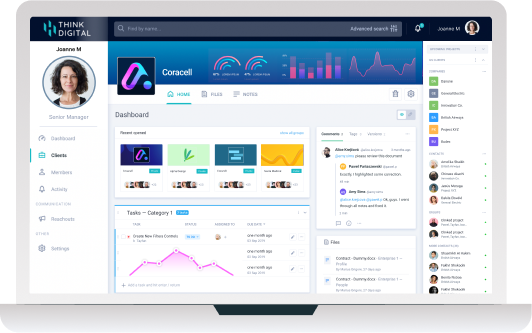Client communication software can help you better interact with your colleagues and clients as well as help you manage your tasks and different projects easily. Strong client communication skills can make a huge difference in the user experience of your clients, so it is really important to make sure client needs are met by them being heard.
Communication led software can be a key to achieving a great customer experience through the tools it equips you with. Here is why client communication is so important, and five steps to effectively managing your client communication, using a cloud-based communication solution.
Why is client communication important?
You want to achieve a good impression with your clients that will keep them wanting to come back. Great communication levels can help you achieve this through allowing you customers to be felt like they are listened to and valued, and by positioning yourself as someone who cares about them. Not only will you develop lasting business relationships with existing clients, you can further grow your business through attracting new clients, too.
Why should I consider cloud-based client communication software?
Moving to cloud based client communication software has some clear benefits over the on-premises alternative - with more efficient collaboration (even across geographical borders), instant access to important information, fuss-free IT maintenance (managed by your third-party vendor) and reduced costs being just a few.
When communication makes up a large part of your day-to-day work, it can consume your time and effort, distracting you from your core deliverable service. Utilising the cloud can help you to get your communication under control and will help you to focus on where you can add the most value elsewhere - and ultimately help to grow your business.
Step 1 - Set your communication objectives
You should define what you want to get out of your communication channels to be able to make the best use of them and to guide yourself to achieving these goals. Do you want to increase security for your clients? Or improve response rate and timeliness? Perhaps you're looking to build stronger business relationships and increase client loyalty? It's important to identify the goals that you'd like to achieve with a communications solution. This will help you to prioritise your choices for potential software, as each solution you look at will offer different features and benefits.
Step 2 - Choose the right solution
Cloud-based client communication software is great for on-the-go access to conversations and documents. This can be useful for clients who are based far away from you and would be unable to meet in person, but it is also great for giving you and your colleagues the freedom to work on the go or when it is convenient.
You should also investigate the options that a software provides for customization, as how your online presence looks is another way of communicating to your clients. Branded software will allow you to customise your groups and projects before inviting clients to join conversations, whilst increasing trust and loyalty. Customisation options can include uploading your own logo, using background colours and terminology that match your branding, branding your login page, implementing a custom URL and mobile application.
Step 3 - Share content and conversations
You can get started with effective communication management by uploading and sharing information into your branded client groups, requesting feedback and approvals from within your platform. On client communication software like Clinked, you can also enable notifications to ensure that clients are always in the loop. With this you can update everyone on project progress, set deadlines to follow and use file versioning to provide your clients with the latest document revisions.
Step 4 - Monitor effectiveness
Good communication tools are useful, but you should also be measuring their effectiveness in achieving your overarching goals. How regularly are your clients accessing their documents and conversations? Are they engaged with your business? You can track this user activity with an audit trail. Two-factor authentication, complex passwords and user-based permissions can also provide your clients with extra security that email alone can’t offer your communications.
Provide your clients with the reassurance that their communication and information will be safely stored (but instantly accessible to those with specified permissions) within your communication solution, no matter their geographical location. Building trust with your clients can increase adoption rate and retention.
Step 5 - Scale up when necessary
Subscription-based software is a cost-effective and time saving alternative to on-premises when it comes to managing new members, especially as your client base grows. With a third-party provider hosting your solution, you won't need to worry about keeping on top of installation, hiring specialist IT personnel or software updates and maintenance; you can easily scale up and down, according to your requirements.
If you’re interested in discovering more features of Clinked’s client communication software portal, sign up for a free 10-day trial and get set up in minutes.









Let Us Know What You Thought about this Post.
Put your Comment Below.